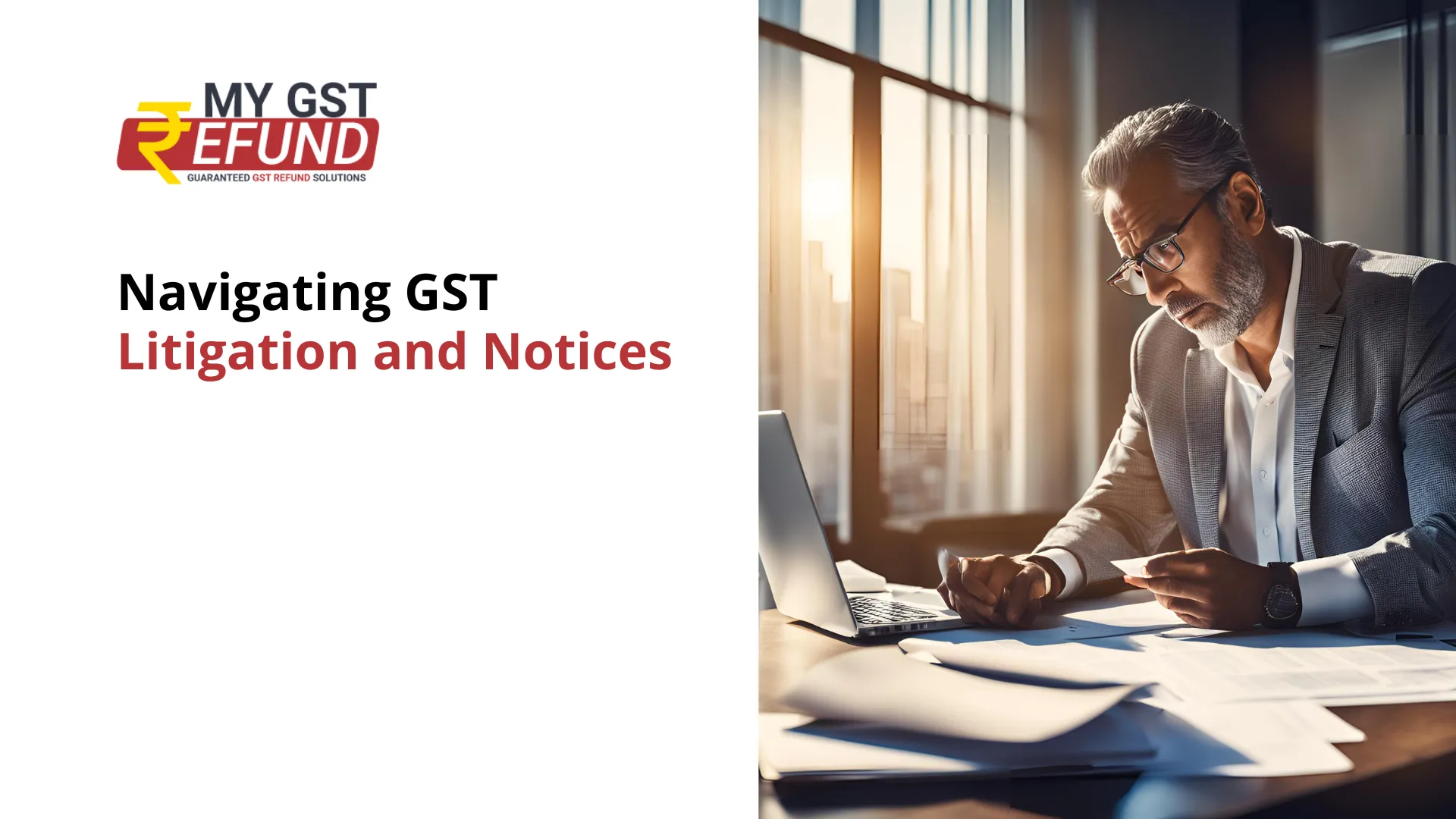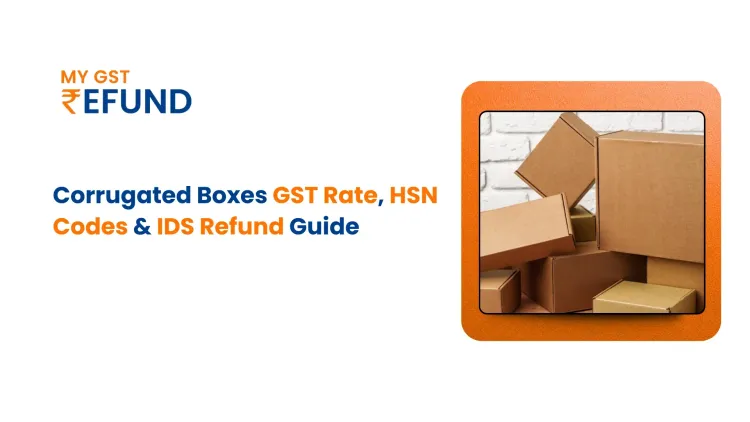This guide explains how notices and disputes work under GST (Goods and Services Tax) in India. It covers the basics of GST, its benefits, and what GST disputes are all about. It goes over different kinds of tax disputes, why they happen, who is involved, the types of notices you might receive from the GST department, and how the dispute process works. It also highlights why it's important to write clear and accurate notices and orders. Finally, it offers tips on how to handle GST disputes effectively.
Meaning of GST litigation
GST litigation involves legal disagreements or problems that come up under the Goods and Services Tax (GST) system. It deals with issues related to understanding, applying, and following GST laws and rules.Here are some examples of matters and issues that can be categorised as GST litigation-
1. Transitional Credits: When GST was introduced, businesses had to move from the old tax system. Disagreements can occur about whether businesses correctly use credits from the old system to reduce their new GST bills.
2. Input Tax Credit (ITC): Businesses can claim a credit for GST paid on their purchases to offset the GST they charge on their sales.
Problems can arise if there’s confusion about whether certain purchases qualify for this credit or if the credit amount is calculated correctly.
3. Refund Claims: GST allows businesses to get refunds if they’ve paid too much tax or meet specific conditions. Issues can come up if tax authorities refuse or delay processing these refunds, leading to disputes to get the money back.
4. Payment Issues: Businesses must pay the correct GST amount on their sales or services. Disputes can happen if a business doesn’t pay the full GST amount or if there’s a disagreement on how much tax should be paid.
These situations show where GST disputes might arise. Resolving these disputes usually involves legal steps, like filing appeals, presenting the case to authorities or courts, and sometimes using other methods to settle the issue.
Types of GST Litigation
1. Direct Tax Litigation:Direct tax litigation involves problems related to direct taxes for example income tax, wealth tax. It deals with tax calculation, interpreted. Any problem in this area will be handled by the income tax department .
2. Indirect Tax Litigation: This part involves matters related to indirect taxes and problems related to indirect taxes like claim of input tax credit ,valuation etc. Any disputes related to indirect taxes will be solved by the GST department and special indirect tax department.
Direct tax litigation focuses on individual taxpayers' income and assets, while indirect tax litigation affects a broader range of businesses and individuals because it concerns the taxation of goods and services.
Reason Behind GST Litigation
- Different Interpretations of the Law: GST laws can be complex and open to different interpretations by both taxpayers and tax authorities. This can lead to confusion about whether certain goods or services should be taxed, if they qualify for exemptions, or if they have the right tax rate. Such misunderstandings can result in disputes.
- Ambiguity in GST Circulars: Taxpayers often receive circulars from the Central Board of Indirect Taxes and Customs (CBIC) that explain various GST rules. However, if these circulars are unclear, it can lead to confusion and disagreements, which may eventually result in disputes.
- Discrepancies in GST Returns: Mistakes or misunderstandings in tax documents, like errors in entering data or interpreting tax laws, can cause issues with tax authorities. If these mistakes aren’t fixed within the given time, it might lead to legal action.
- Inaccurate Opinions: Many people rely on tax professionals for advice on filing their GST returns. If the advice is wrong, it can lead to incorrect filings and disputes. For example, if a tax advisor misclassified goods or services, it can result in penalties and legal problems.
- Supreme Court Rulings: Decisions made by the Supreme Court impact GST laws. Sometimes, these rulings can cause confusion or add to the burden on taxpayers if they are misunderstood or misinterpreted, leading to more disputes.
- Modifications to GST Law: GST laws have changed several times since they were introduced, and some changes apply to past transactions. If taxpayers aren’t aware of these updates or misunderstand them, they might file incorrect returns and face legal issues.
To avoid disputes, it’s important for taxpayers to keep up with the latest GST developments and understand the reasons behind potential litigation.
Types of GST Notices Issued by GST Department
The GST department issues notices at different stages of dealing with tax matters, which can be categorized into three main types. Pre-litigation notices are sent before any legal action begins and typically request additional information or clarification to resolve issues early. Notices during litigation are issued while a legal dispute is ongoing and may include updates or require further information as the case progresses. Other miscellaneous notices cover a range of administrative matters, such as routine checks or compliance reminders. These notices are based on various sections of the GST law, which guide the authorities in managing and resolving tax-related issues.
Pre-Litigation Notices
1. Section 61- Scrutiny of Returns: The tax officer can review the tax return and related details submitted by a business to ensure everything is correct. If there are any mistakes or issues found, the business will be notified and asked to explain them.
2. Section 65- Notice for Conducting Audit: The tax commissioner or an authorised officer can order an audit of a business. This audit can happen at specific times and as needed. The business will receive a notice at least fifteen working days before the audit takes place.
3. Section 66- Special Audit by Chartered Accountant/Cost Accountant: If a tax officer, at least of the rank of Assistant Commissioner, thinks that the value declared or the credit claimed by a business is incorrect or unusual, they can ask the business to have its records audited by a Chartered Accountant or Cost Accountant appointed by the Commissioner.
4. Section 67-Inspection, Search, and Seizure: An officer with at least the rank of Joint Commissioner has the authority to inspect, search, and seize documents or items if there are discrepancies or issues with the notices.
5. Section 70-Summons: A tax officer can call anyone to provide evidence or produce documents during an inquiry. This process is similar to how a civil court operates and is considered a "judicial proceeding" under the Indian Penal Code.
Notices During Litigation
1. Section 73: (Show Cause Notice for Normal Period) This notice can be issued within 33 months after the GSTR-9 due date. It addresses cases where tax was not paid, was short paid, refunds were incorrectly given, or input tax credits were wrongly used, as long as these issues are not due to fraud or intentional misstatements. If there are such issues, the tax officer will send a notice asking why the specified amount, plus interest and any penalties, should not be paid. The notice will be similar to those used before GST but will be sent online, and will include a summary of the total demand in Form DRC-01.
2. Section 74: (Show Cause Notice for Extended Period) This notice can be issued within 54 months after the GSTR-9 due date. It covers cases where tax issues, such as not paying, short paying, or incorrectly receiving refunds or input tax credits, are due to fraud or intentional misstatements to evade tax. In such cases, the tax officer will issue a notice demanding why the business should not pay the specified amount, plus interest and a 100% penalty. This notice will also be sent online and will include a summary of the total demand in Form DRC-01.
3. Section 76:( Notice for Collected Tax Not Deposited) This notice deals with situations where tax was collected from customers but not paid to the government. The notice requires the business to immediately pay the collected tax to the government, regardless of whether the related transactions are taxable.
Other Notices (Miscellaneous):
- Section 79: (Recovery of Tax) This includes notices for recovering unpaid tax due to vendor defaults, issues with e-way bills, and investigations conducted by authorities like the Comptroller and Auditor General (CAG), intelligence agencies, or anti-evasion teams.
Procedure for GST Litigation
1. Analysing the Notice or Show Cause Notice: Upon receiving a notice or show cause notice from the GST department, it’s crucial for the business to carefully review and understand the document.
2. Briefing the Company: Next, the company should prepare a summary of the notice and develop a strategy for how to address it. This involves planning how to defend the company effectively.
3. Gathering Required Information: To support the case, the business needs to collect all necessary evidence, data, and documents to present to the officials.
4. Validating the Information: After gathering the information, it must be checked for accuracy to ensure that all data is correct.
5. Drafting a Suitable Reply or Appeal: Once the documentation is complete, the business should draft a reply or appeal based on thorough research of legal precedents. This draft will respond to the notice received.
6. Submitting the Appeal Reply: The final step is to submit the prepared reply or appeal to the appropriate department.
7. Appearing Before Authorities: The last part of the process involves appearing before the Commissioner, Adjudicating Authority, or Tribunal to present and defend the case.
Effective GST Litigation Management in India
Managing GST litigation can be complicated and overwhelming, involving a lot of legal paperwork and court procedures. However, following the right strategies can help streamline the process and improve the outcome of the case.
1. Stay Up-to-Date: It’s important to keep current with the latest GST laws and regulations to prevent non-compliance and avoid disputes with tax authorities.
2. Keep Detailed Records: Maintaining accurate records, such as invoices, tax returns, and other important documents, is essential for supporting the case in the event of a dispute.
3. Get Professional Advice: Consulting a tax advisor or attorney can provide guidance on rights and obligations under GST laws and help navigate the legal process effectively.
4. Act Quickly: If a tax assessment is received, it is crucial to act promptly and file an appeal within the specified thirty-day period.
5. Make a Convincing Case: When preparing an objection or appeal, it is important to clearly explain the position and support arguments with relevant evidence and documentation.
6. Be Active: Proactively comply with GST laws by organizing regular audits and calculations to reduce the risk of disputes and penalties.
7. Consider Alternative Dispute Resolution: Explore alternative methods for resolving disputes, such as negotiation or arbitration, rather than going through formal litigation.
Need for Drafting Good Notices and Orders
A reasoned order is an important part of fair legal processes. If an order is not well-reasoned, it can affect how tax matters are handled. For example, notices that are poorly drafted or lack necessary information can be blocked by High Courts. The same applies to orders; if an order is badly written, missing key details, or is not logically clear, it might be overturned on appeal or sent back for further review. This not only creates extra work for the tax administration but also involves officers who were not part of the original case. Additionally, these remanded orders and stays can disrupt the process of recovering taxes, requiring additional documentation and procedures. Even if the tax files contain enough evidence or the law supports the department's position, these issues can still cause problems. Therefore, creating a well-reasoned order that follows all legal principles and procedures is crucial for effective tax administration.
General Contents Expected in a Notice
1. Statutory Provision and Time Frame: The legal basis and the period during which the proposed action is being considered must be clearly outlined.
2. Records and Evidence: The documents and evidence that the assessing authority is using to propose action should be clearly marked and referenced.
3. Self-Declaration by the Taxpayer: If the taxpayer has made any self-declaration to the department that the assessing authority disagrees with, this should be mentioned.
4. Detailed Analysis: The assessing authority should provide a thorough analysis of the evidence and records that justify the proposed action.
5. Conclusion of the Authority: The final conclusion of the assessing authority should be based on the analysis provided.
6. Calculations: The calculations, both numerical and logical, used by the assessing authority to determine the proposed liability should be clearly explained.
7. Additions or Estimations: If the assessing authority has made any additions or estimates based on their judgment, the special circumstances and reasons for these adjustments should be detailed.
8. Realistic Additions: The amount of any additions or estimates should be reasonable considering the nature of the irregularity and the size of the business.
9. Time for Response: The taxpayer should be given at least 15 days to respond to the proposal.
10. Access to Documents: The taxpayer should be allowed to view or obtain copies of the documents and records that the authority used for the proposal. Providing these copies with the notice itself is preferred to prevent delays.
11. Cross-Examination Requests: Any requests to cross-examine witnesses should be considered fairly and decided upon.
12. Opportunity to Be Heard: After completing the above steps, the taxpayer should be given a chance to present their side of the case.
13. Adjournments: Requests for additional time or rescheduling of hearings should be granted based on their merit.
15. Avoiding Unnecessary Claims: The authority should avoid making irrelevant or unfounded claims that do not pertain directly to the matter, as such claims can undermine the proceedings.
Drafting a Response
Crafting a reply to a show cause notice is a skilled task that requires careful attention. Much like a well-cooked dish needs to be presented attractively, a response to a show cause notice should be clear and well-organised. A calm and quiet environment enhances the quality of the reply, allowing for a smooth flow of information. Here are key points to consider when preparing a response:
1. Addressing All Issues: The reply must address every point raised in the show cause notice. Each paragraph should be responded to comprehensively. Missing any point can be interpreted as agreeing with it, which could negatively affect the outcome of the case.
2. Citing Legal Provisions: The response should be clear and to the point, avoiding unnecessary details. When necessary, specific legal provisions should be quoted and explained to show how the laws have been interpreted.
3. Handling Interpretation Issues: If the notice involves interpreting laws, it's important to explain how each term or section is understood. Past judgments have shown that penalties shouldn't be applied in cases of genuine interpretation issues.
4. Dealing with Classification Issues: Classification disputes are common, especially concerning how goods or services are categorised under different tariff or code systems. If the tax rates are the same, the dispute may not have significant implications, but proper classification must be justified.
5. Providing Calculation Details: For issues related to valuation or tax calculations, the response should include detailed calculations and the methods used to determine the tax liability. This should align with the valuation rules and show how the declared values and tax rates were arrived at.
6. Using Annexures: Additional details that are too lengthy to include in the main reply should be provided in annexures. This helps keep the main response focused and allows for easier reference to supporting documents.
7. Documentation and Submission: The reply should be printed on the company's letterhead, with annexures on A4 or legal-sized paper as needed.
8. Prepare three copies: one for submission to the department, one for acknowledgment receipt, and one for the company’s records. Ensure that all pages and annexures are numbered, neatly assembled, and properly tagged before submission.
Conclusion
How a case is handled professionally is crucial. The quality of preparation, attention to detail, and presentation before the authorities all make a significant impact. When a professional appears before authority, it’s important for them to convey competence and respect. This guide offers a useful overview for understanding how to manage GST notices and disputes in India. It explains the basics of GST, the different types of disputes and their causes, key players involved, types of notices from the GST department, and strategies for effective management. Following these guidelines can help navigate GST disputes more effectively and achieve better outcomes.
Our comprehensive litigation support services provide you with the optimal blend of effectiveness and affordability precisely when you require it the most. Click on the link : GST litigation and technical replies
Related Posts







